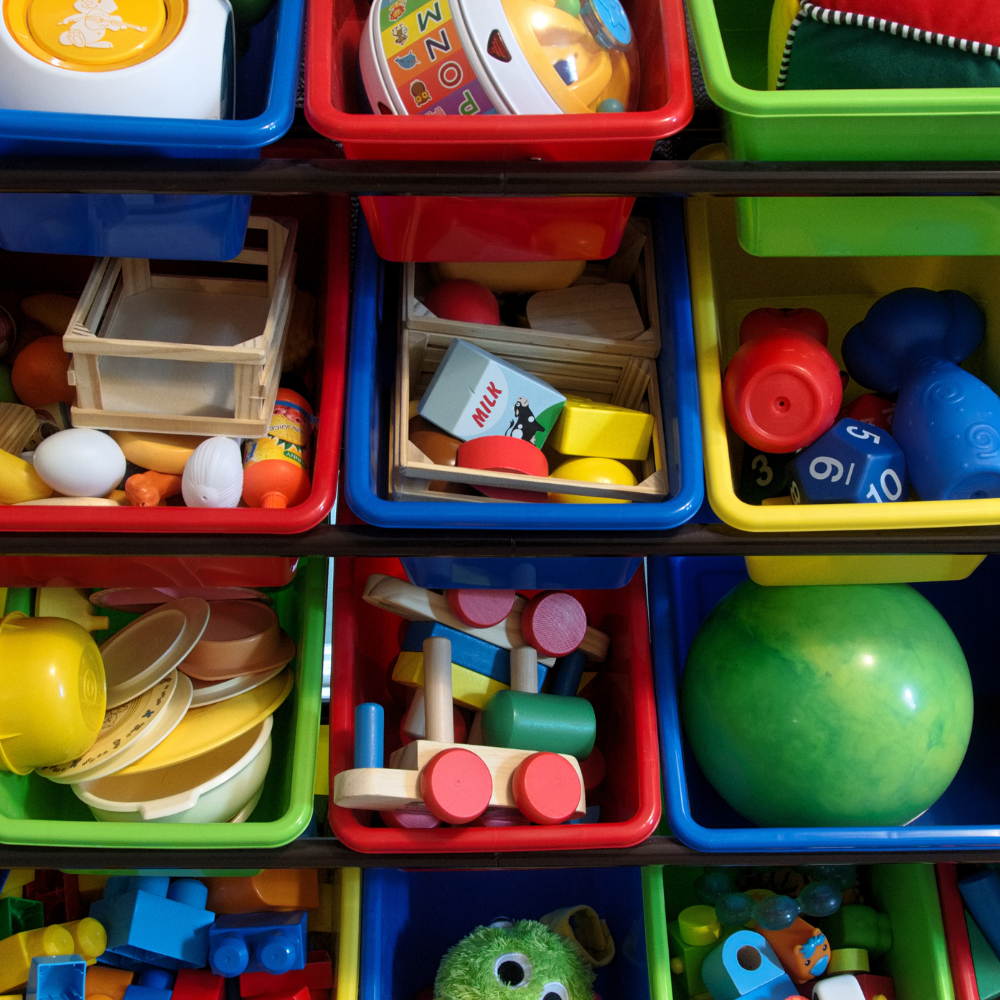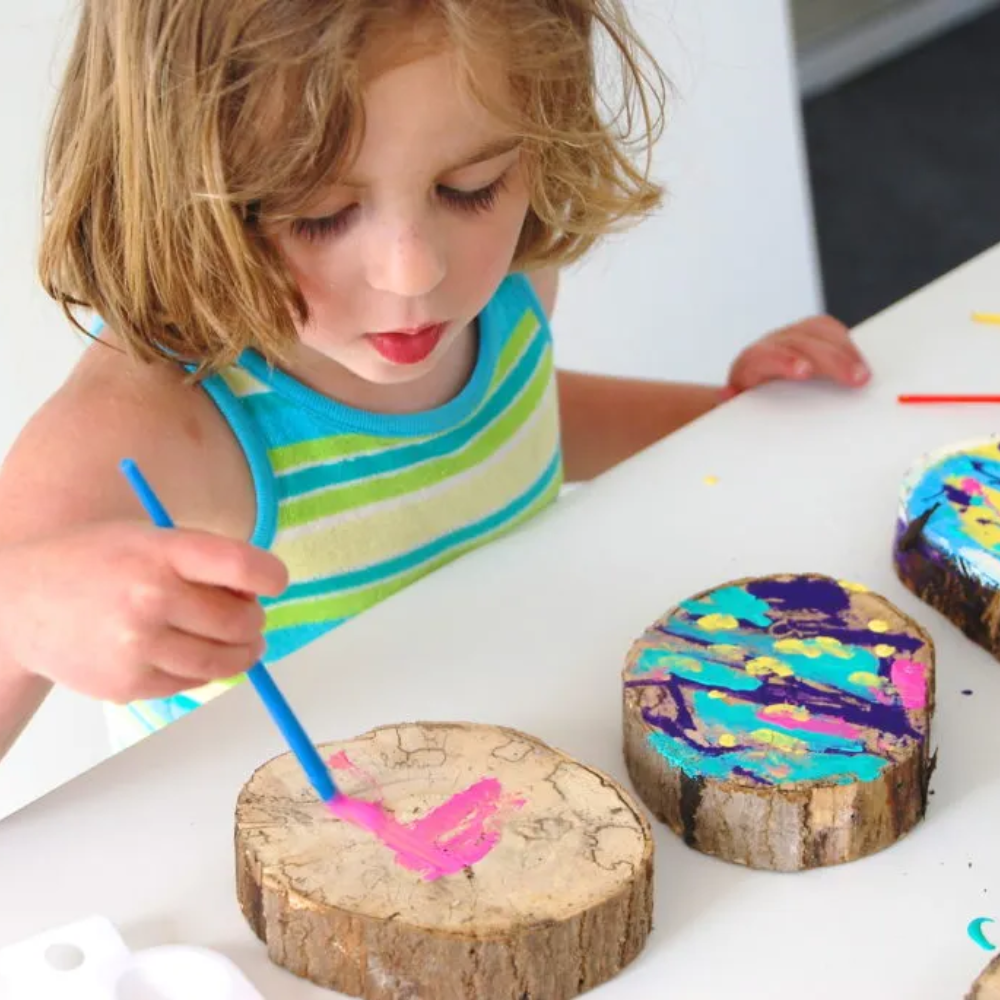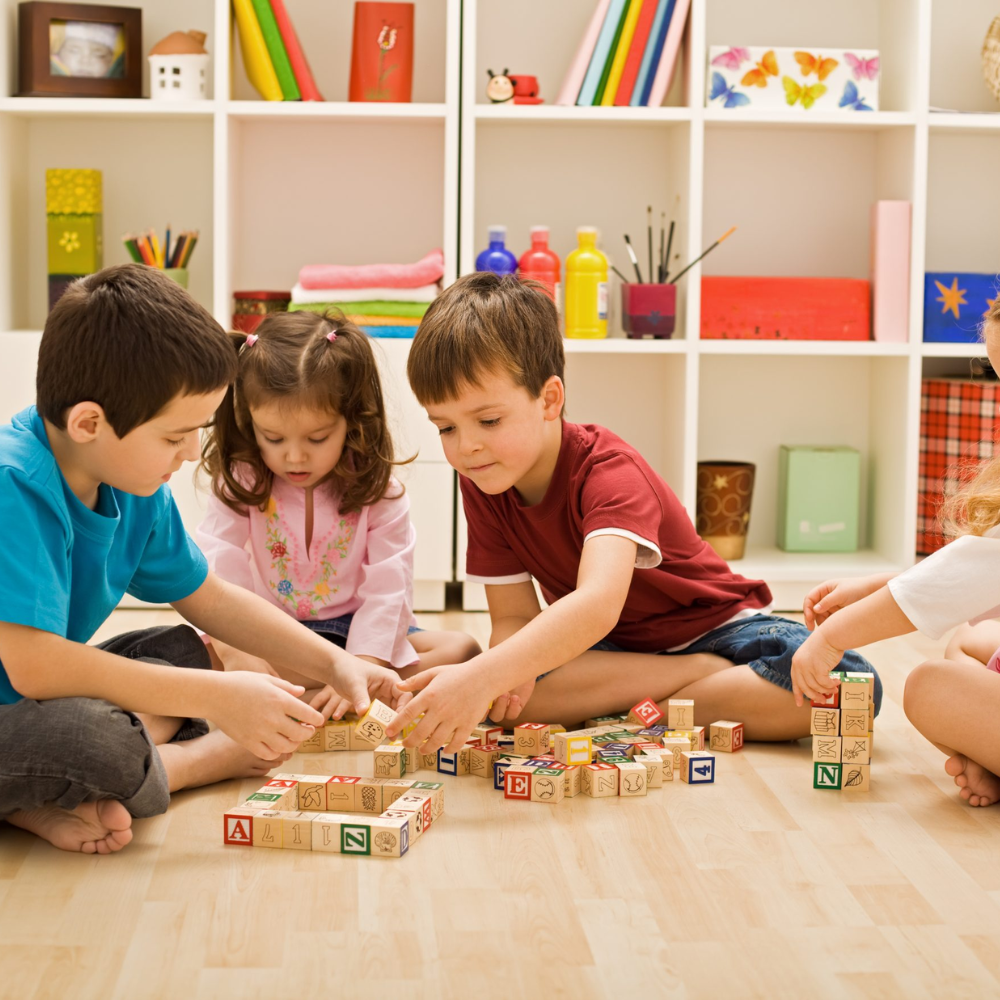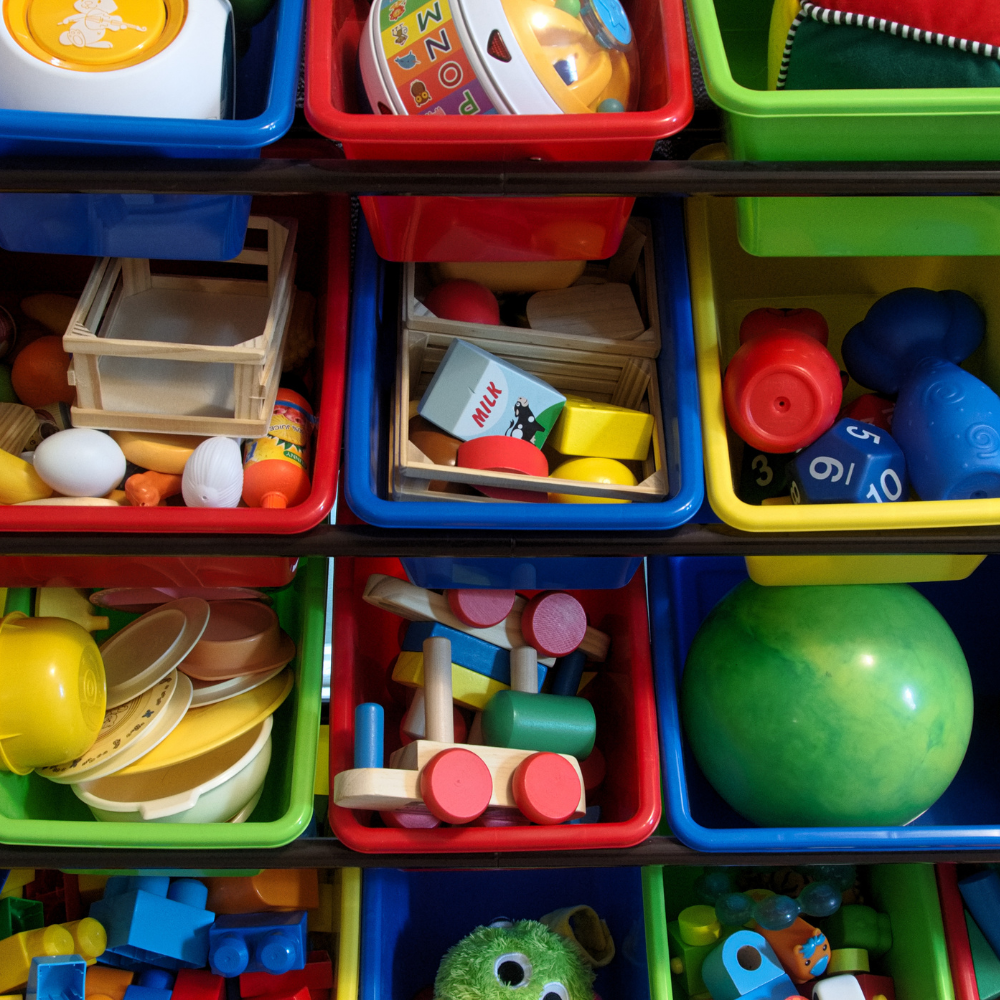Painting plastic toys can be a fun and creative activity for both children and adults. It allows for personalization and creativity and can bring new life to old or worn-out toys. With the right materials and techniques, you can transform an ordinary plastic toy into a unique piece of art.
In this guide, we will discuss the steps and tips for painting a plastic toy. From preparing the surface to choosing the right type of paint, we will cover everything you need to know to achieve a successful painting project.
So, whether you're looking to revamp your child's favorite toy or add some custom decorations to your collection, this guide will provide all the information you need to get started.
Why Paint Plastic Toys?

There are many reasons why people choose to paint plastic toys. For children, painting their own toys can be a fun and engaging activity. It allows them to express their creativity and make their toys more unique. It also gives them a sense of ownership over their toys, making playtime even more enjoyable.
For adults, painting plastic toys can be a form of relaxation and self-expression. It allows for customization and personalization of collectible or decorative items, adding a personal touch to any space.
Furthermore, painting plastic toys can also give new life to old or worn-out toys. Instead of throwing away old plastic toys that may still hold sentimental value, you can breathe new life into them by giving them a fresh coat of paint.
Step-By-Step Guide On Painting Plastic Toys

There are several important steps to follow when painting a plastic toy. These include:
Preparing the Surface
Before you start painting, preparing the surface of the plastic toy is crucial for achieving a smooth and lasting finish. Begin by cleaning the toy thoroughly with soap and water to remove any dirt, grease, or residues. This step helps the paint adhere better.
Once cleaned, dry the toy completely with a soft cloth. If the surface feels glossy, consider lightly sanding it with fine-grit sandpaper to create a rough texture; this will enhance paint adhesion. After sanding, wipe down the toy again to remove any dust particles.
Finally, ensure the toy is placed on a clean, dust-free workspace, as even small particles can mar your finished paint job. Proper preparation sets the foundation for a successful painting project.
Choosing the Right Paint
When it comes to choosing paint for plastic toys, there are several options available. However, not all paints will adhere well to plastic surfaces. For best results, choose a paint specifically made for plastics or one that is labeled as suitable for multiple surfaces, including plastic.
Acrylic paint is a popular choice because it adheres well to plastic and dries quickly. It also offers a wide variety of colors and finishes. Another option is enamel paint, which provides a durable and glossy finish but requires longer drying times.
Whichever type of paint you choose, make sure it is non-toxic and safe to use on children's toys if they will be involved in the painting process.
Applying Primer
Applying a primer is an essential step to ensure the paint adheres well to the plastic toy and prevents it from chipping or peeling. Primers designed for plastic surfaces create a strong bond between the paint and the plastic, resulting in a smooth and long-lasting finish.
Before applying primer, make sure you have properly prepared the surface by cleaning and sanding (if necessary). Apply a thin layer of primer using a brush or spray can, following the manufacturer's instructions. Let it dry completely before moving on to the next step.
Painting Techniques
When it comes to painting plastic toys, there are several techniques you can use to achieve different effects. Some popular techniques include:
- Brush painting: This is the most common method of painting plastic toys, using a small brush to apply paint evenly onto the surface.
- Spray painting: Using spray paint can provide a smooth and even finish, but it requires proper ventilation and protective gear.
- Sponge technique: This technique involves using a sponge to create unique textures or patterns on the toy's surface.
- Stenciling: Stencils can be used to add intricate designs or shapes onto the toy's surface.
Experiment with different techniques to find what works best for your project. The key is to apply thin and even coats of paint, allowing each layer to dry completely before adding another.
Adding Details and Finishing Touches
The last step in painting a plastic toy is adding details and finishing touches. This can include using smaller brushes to add fine lines or accents, adding decals or stickers, or even using glitter for some extra sparkle.
Be patient and take your time with this step, as it can make all the difference in the overall appearance of the toy. Once you are satisfied with the details, let the paint dry completely before handling or playing with the toy.
So these are the steps and tips on how to paint a plastic toy successfully. By following these guidelines, you can turn any plain plastic toy into a colorful and personalized work of art. Remember to have fun and let your creativity shine through!
Does Painting Affect The Toy's Safety?

One common concern about painting plastic toys is whether it can affect their safety, especially for children who may come into contact with the painted surface. However, as long as non-toxic and child-safe paints are used, there should be no cause for concern.
Acrylic and enamel paints are generally considered safe for use on children's toys once they have fully dried. It is essential to let the paint cure completely before allowing children to play with the toy to avoid ingestion of any residual paint.
Furthermore, it is crucial to follow safety precautions when handling paint and ensure proper ventilation if using spray paint. Always read and follow the manufacturer's instructions when using any paints or primers.
Why Choosing The Right Toys Is Important
Selecting the right toys for children is essential for several reasons. First and foremost, safety is paramount; toys should be free from hazardous materials and sharp edges to prevent injuries. Non-toxic paint, safe materials, and age-appropriate designs help ensure a secure play environment.
Moreover, the educational value of toys cannot be overlooked. High-quality toys encourage cognitive development, creativity, and problem-solving skills, which are crucial to a child's growth. For instance, building blocks can enhance fine motor skills and spatial awareness, whereas imaginative playsets can foster social skills and emotional intelligence.
Additionally, choosing toys that reflect a child's interests can help keep them engaged and promote hours of exploration and discovery. And let's not forget the joy and happiness that comes from playing with a favorite toy, which can have positive effects on a child's emotional well-being.
Top Best Types Of Toys For Children

There is an endless variety of toys available for children, but some stand out as the best types for their developmental and entertainment value. These include:
Building sets
Building sets are great for stimulating the imagination and enhancing fine motor skills. They come in different forms, such as blocks, Legos, and magnetic tiles, allowing children to create endless structures and designs.
Lego sets, in particular, have gained popularity for their ability to engage children of all ages and promote problem-solving skills. Plus, they come in many themes, from popular movies to classic city scenes.
Montessori Toys
Montessori toys are designed with the Montessori educational approach in mind, focusing on hands-on learning and sensory experiences. These toys are often made from natural materials and promote independent play and exploration.
Some popular examples of Montessori toys include wooden puzzles, sorting games, and counting beads. They can be used for various learning activities such as color recognition, shape matching, and counting practice.
Additionally, Montessori-based toys can also aid in developing fine motor skills, hand-eye coordination, and concentration.
Plush Toys
Plush toys, or stuffed animals, have been a childhood staple for generations. They provide comfort and companionship for children and develop their emotional intelligence as they learn to nurture and care for their plush friends.
Furthermore, plush toys come in various sizes, shapes, and characters, making them suitable for all ages. From simple teddy bears to elaborate character replicas, these soft toys will surely bring joy to any child's life.
Educational Electronic Toys
Electronic toys have become increasingly popular, and many now focus on educational features. From interactive learning tablets to coding robots, these toys offer a fun and engaging way for children to learn while playing.
While electronic toys can be entertaining, limiting screen time and choosing ones that promote active play and critical thinking is essential. Look for options that encourage physical movement, problem-solving skills, and creativity.
Outdoor Play Equipment
Outdoor play equipment, such as swings, slides, and climbing structures, provide an excellent outlet for children's energy while promoting physical activity and gross motor skills. They also offer opportunities for social interaction with other children.
When choosing outdoor play equipment, safety should be a top priority. Look for durable and well-constructed equipment made from non-toxic materials. Additionally, always supervise children while playing on playground equipment to prevent accidents.
So these are the top best types of toys for children, each with their unique benefits and features. Ultimately, the best toy for a child is one that captures their interest and encourages learning, growth, and exploration. The right toy can make all the difference in a child's development and create lasting memories for years to come.
FAQs
How do I prepare Little Tikes plastic outdoor toys for painting?
To prepare Little Tikes plastic outdoor toys for painting, start by cleaning the surface thoroughly. Make sure the smooth surface of the plastic is free of dirt and debris. You can lightly sand the plastic to help the spray paint adhere better. Once prepped, you’re ready to spray paint plastic toys for a fresh new look.
What type of paint should I use to spray paint plastic outdoor toys?
When spraying paint on plastic outdoor toys, it’s essential to use paint specifically designed for plastic surfaces. Plastic paint, which you can find at a hardware store, is formulated to bond well with plastic. This type of paint ensures that your Little Tikes plastic toys or other Tikes outdoor toys look vibrant and durable.
Can I use regular spray paint to paint a Little Tikes playhouse?
While regular spray paint can be used, it’s better to use spray paint designed for plastic when painting a Little Tikes playhouse. Plastic paint will adhere better to the smooth surface of the plastic, providing a more even and long-lasting finish to your plastic playhouse.
How can I remove paint if I make a mistake while spray painting plastic toys?
If you make a mistake while spray painting plastic toys, you can use paint thinner to remove the unwanted paint. Apply the paint thinner carefully and wipe away the spray-painted area. Make sure to work in a well-ventilated area and be cautious with the amount of paint thinner you use to avoid damaging the plastic.
What is the best way to achieve a smooth surface when spray painting Little Tikes outdoor toys?
To achieve a smooth surface when spray painting Little Tikes outdoor toys, make sure to clean and sand the plastic first. Then, apply the plastic paint in light, even coats. Holding the spray can about 8-12 inches away from the toy and using a sweeping motion will help you get a smooth and even finish on tikes plastic toys.
Where can I find the right spray paint for plastic outdoor toys?
You can find the right spray paint for plastic outdoor toys at your local hardware store. Look for plastic paint that is specifically formulated to adhere to plastic surfaces, ensuring your Little Tikes plastic toys or any other tikes plastic toys are spray painted with a durable and vibrant finish.
Conclusion
In conclusion, choosing the right toys for children is crucial for their safety, development, and happiness. From building sets to outdoor play equipment, there are endless options available that can provide both entertainment and educational value.
Always prioritize safety when selecting toys for children and follow the manufacturer's instructions when using paints or other materials.
Let's create a safe and enjoyable environment for our little ones to learn, grow, and have fun! Happy playing!
Subscribe to our email newsletter and unlock access to members-only content and exclusive updates.

Comments